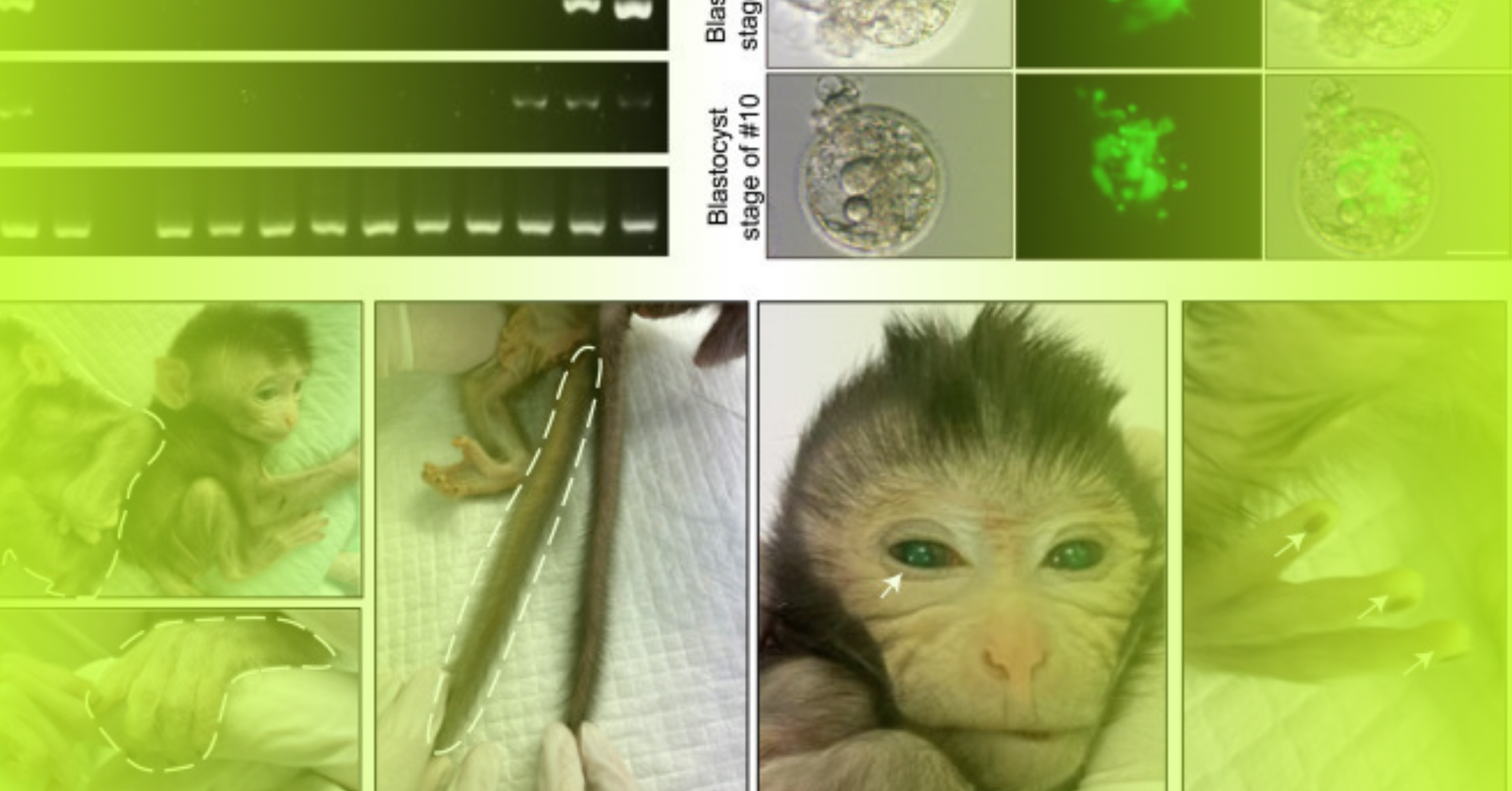
The media is going wild over animal researchers’ creation of a nonhuman primate chimera: “a single organism made up of cells that derive from more than just two parents.” (The term chimera “originated from the monstrous hybrid creatures that populate Greek myths”, yet serves as a fitting descriptor here in more than purely biological ways – indeed, it finds restoration to its original conception in the monstrous acts of cruelty performed by the modern animal research industry.)
Dozens of articles have been written about this experiment, but, true to form when it comes to mass media coverage of animal research, none of them paint an honest picture. So, we have!
Lab-Engineered Monkey’s Fluorescent Green Eyes Outshone Only by His Creators’ Greed
Animal researchers are reporting “delight” at the live birth of a nonhuman primate”, whose appearance has been described as “unsettling, to put it mildly”. Referred to simply as “#10”, this male macaque was born with fluorescent green eyes, “eerily green” skin, and “glowing fingertips reminiscent of E.T.”

Researchers created #10 by injecting engineered, tinted stem cells into hundreds of four-to-five-day-old embryos, then forcibly and surgically implanting 74 of these embryos into the wombs of 40 enslaved nonhuman primates (euphemistically termed “surrogate mothers”) of a species now endangered due in significant part to their trafficking by animal researchers. Researchers’ assaults resulted in six live births, of which one (#10) presented as significantly chimeric.
#10’s short, human-manufactured life was entirely miserable.
After being poked, prodded, and invasively handled by researchers for 10 days, #10 was killed after developing respiratory failure and hypothermia.
Researchers maintain that this experiment was successful – that “the process did ultimately accomplish its goal….” – though their work is not without its detractors. Scientists who were not directly involved with this experiment admit that the baby primate “likely” suffered, that that there is no “breakthrough” to be celebrated here, and that the work is nothing more than a “basic science finding” – indeed, of the 2% of basic science findings that include a claim of future human application, only 0.004% actually lead to a clinical application useful to humans.
In an effort to shield their media parade from the “rain” of less-biased commentary – i.e., their infliction of tremendous, unjustifiable, and unethical suffering upon sentient other-than-human animals and their scientific impotence – researchers have thrown out canned and disingenuous claims of scientific promise.
This research, they say, could “‘one day lead to animals such as pigs being used to grow human organs.’” They do not provide a basis for this claim and ignore that these types of efforts have failed for centuries, pose tremendous risks for humans, and disregard the sufficient supply of naturally-occurring human organs for humans in need of transplants.
The researchers allege that this research could “‘one day create monkeys with humanlike tissues or disease,….’” Upon consideration, however, this claim seems to do them more harm than good by implicitly and fundamentally undercutting researchers’ simultaneous blustering that the use of nonhuman primates for human research is critical(!) because they are serving as effective models for humans. Apparently, according to researchers, they must both continue exploiting nonhuman primates because they’re like humans and find ways to make nonhuman primates enough like humans to make them useful for exploitation. (Certainly, both cannot be true.)
Finally, in providing lip-service to observers concerned about the nonhuman primates themselves, the researchers offer that their work could “have potentially enormous value for species conservation” of endangered species.
The researchers do not acknowledge that the long-tailed macaques they used for this experiment are themselves part of an endangered species and that discontinuing their kidnapping and trafficking for human research would serve to help conserve wild macaque populations without the need for laboratory intervention. Highlighting the self-perpetuation so often observed of the animal research industry, the researchers display a preference for incarcerating, torturing, and killing wild-caught macaques in supposed bids to render their species aid that would not be necessary in the absence of their torture and killing.
While the media circus presses on, researchers’ creation of a chimeric primate is certain to lead to only two things (aside from prolonged careers and big paydays): the “easier and better making of mutant monkeys, just like biologists have been doing for years with mice”, and the perpetuation of an industry that embraces and celebrates the harm of living beings for the supposed, unrealized good of others.